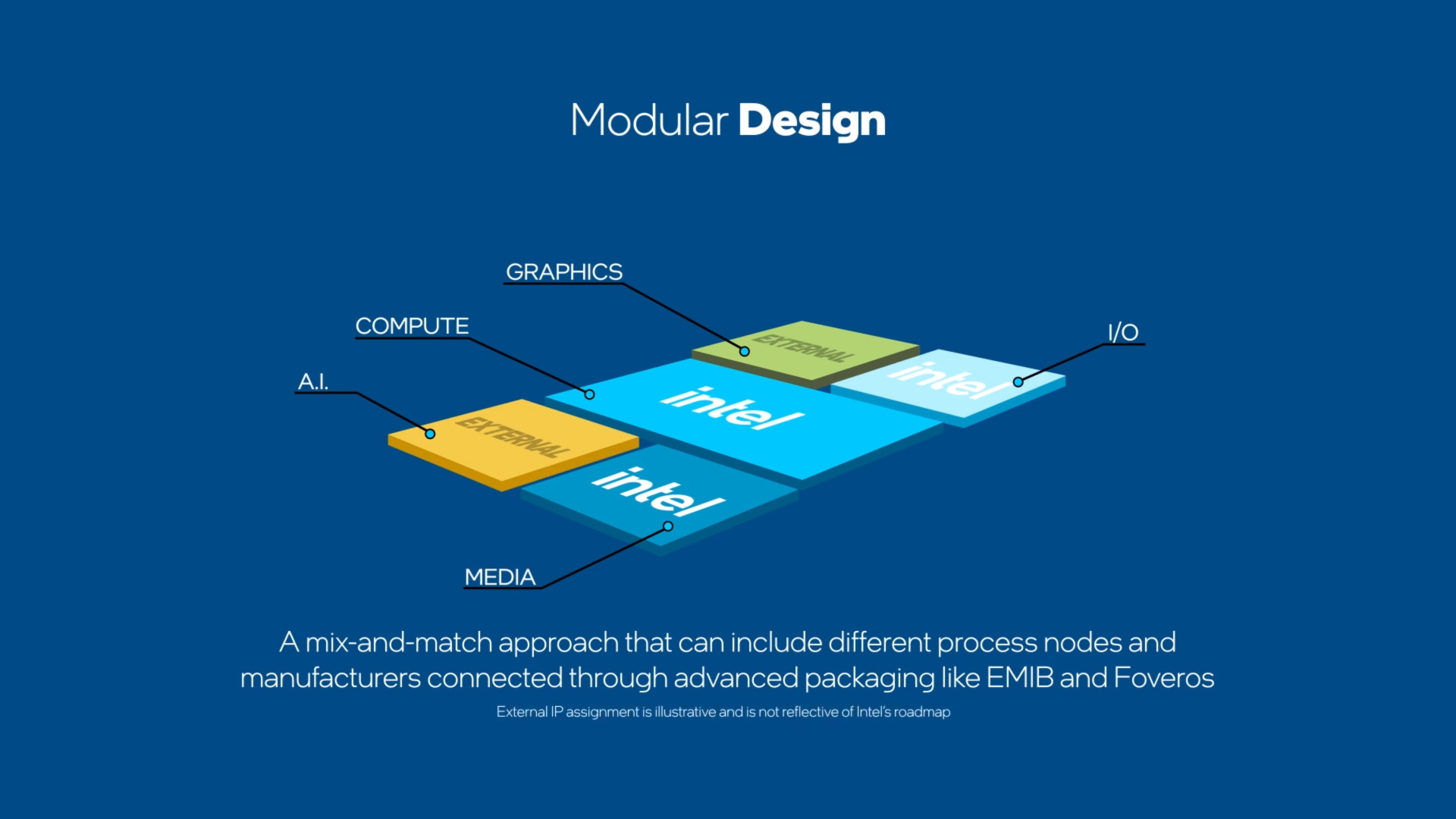Intel's 3D chip tech is 'perfect' so it doesn't have to follow AMD's chiplet design
The big two chipmakers have different ideas on how to replace the monolithic design of yore.

Intel's new CEO, Pat Gelsinger, says its 3D packaging technology is "perfect" and that gives it "the ability to not be doing chiplets, but to be doing tiles." AMD uses TSMC's chiplet packaging technology to build affordable, high core-count CPUs, but Gelsinger is suggesting that because its stacking design is so good Intel doesn't have to go down that road and can use a more performant tile stacking approach.

Best CPU for gaming: the top chips from Intel and AMD
Best graphics card: your perfect pixel-pusher awaits
Best SSD for gaming: get into the game ahead of the rest
In the Intel Unleashed event last night the Q&A section at the end of the event highlighted the difference between Intel's Tile design and AMD's Chiplet model. Thanks to its advanced packaging tech, Intel is suggesting that a modular stacked approach is better than AMD's chiplet design.
One of the big differences between these two is how the individual elements communicate with each other. With AMD's chiplet design, inter-chip communication is fast, but going from one chiplet to another requires a bus, whereas that's not the case with Intel's tile design.
"One of the cool things that I found when I came back was that, even though there were some issues in the process technology, the 3D packaging technology, [chef's kiss] perfect," says Gelsinger. "Unquestioned leadership. And this gives us the ability to not be doing chiplets, but to be doing tiles. Because of that packaging technology, we don't have to buffer interconnect, it's actually like a long wire on-chip.
"And that packaging technology is part of what gives us a really cool advantage in the next-generation of our process roadmap where we're going to be able to mix and match tiles from different process technologies but bring them together as if they're one single chip. We'll be moving from system-on-chip to system-on-package."
As part of the presentation, Pat Gelsinger showed off Ponte Vecchio, Intel's XPU for Exascale Computing and AI. Not a chip that's going to end up in our gaming PCs, but interesting because it is a working example of Intel's tile design—constructed out of no less than 47 tiles, and rolling in at over 100 billion transistors.
So, Intel's technology works and does so using a range of different modules. This is thanks to both the Foveros 3D packaging tech and EMIB—which was once used to squeeze an AMD GPU onto a package alongside an Intel CPU with Kaby Lake-G, remember that?
Keep up to date with the most important stories and the best deals, as picked by the PC Gamer team.
Intel may have stumbled with its process technology, but it's still got plenty of tech know-how up its sleeve, and this could well lead to it regaining its edge in the market. As it is, being able to produce its own chips means that it isn't suffering the shortages that AMD and Nvidia are. And that, ultimately, means that it's making money where those two can't.
Alan has been writing about PC tech since before 3D graphics cards existed, and still vividly recalls having to fight with MS-DOS just to get games to load. He fondly remembers the killer combo of a Matrox Millenium and 3dfx Voodoo, and seeing Lara Croft in 3D for the first time. He's very glad hardware has advanced as much as it has though, and is particularly happy when putting the latest M.2 NVMe SSDs, AMD processors, and laptops through their paces. He has a long-lasting Magic: The Gathering obsession but limits this to MTG Arena these days.




